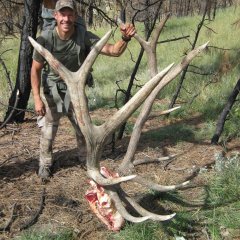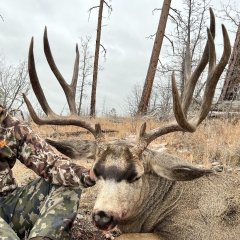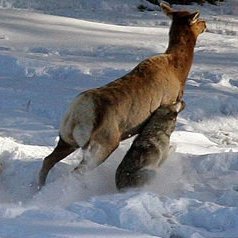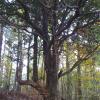

stillatmaxpoints
Members-
Content Count
108 -
Joined
-
Last visited
-
There are a few G&F people that are very good at it, at a few of there offices. One in particular is correct every time
-
Heelers make great companions and pets, but generally are not used for cattle dogs in Arizona
-
If you are looking for a high scoring bull, you don't need the coords to this bull
-
Cost of everything related to hunting has went up astronomically in the last several years, and NR, and R fees should go up accordingly. As far as the heber horses, 900 will not put much of a dent in the population, they have decimated the rangeland to a point where the legal permitted rancher there cannot run any cattle there for any length of time. The wild horse act of i believe 1972, stipulated that there had to be free ranging horses and or burros there when the act was passed, and there was not any there when the act was passed. If they don't remove every feral horse that is there, and keep it that way, then the feral horse problem will never be resolved long term.
-
My in state dream hunt was desert bighorn sheep, finally drew it after 51 years of applying. My other dream hunts i did in Alaska. Had to barrow the funds for one of the hunts. The other two came by a lot of research, and finding affordable hunts, be it late cancelation and so forth. These hunts were many years ago, prices have inflated 100 to 200 % in the last 5 years. My dream hunt that i will never get now was a stone sheep hunt,
-
Those are landowner tags in colorado and new mexico are not for depredation. If you don't draw a antelope tag in the arizona draw and you buy a antelope landowner tag in new mexico, so you can hunt antelope you are supporting landowner tags
-
There is so much misinformation posted on this topic, especially on ranches and there ownership and subsidies they get, less than 1%, but on a forum like this you can say anything, you will not be held accountable for it and we all understand that. Landowner tags, permits or vouchers can and do have a place in hunting if structured properly. For those that do not want them in any form at all, just remember if you participate in the Conservation First AZBGSR super raffle and you buy tickets for the Colorado or New Mexico bull elk hunts then you are supporting landowner tags, permits, or vouchers, because both of those hunts are landowner tags.
-
i did read the book, there was lots of wildlife where there was year round water
-
i did read the book, there was lots of wildlife where there was year round water
-
Man and Wildlife in Arizona The American Exploration Period 1824-1865 By Goode P Davis JR G&F used to sell this book. This book is in the words of the people that explored Arizona, There were no elk in Arizona at that time except the Merrians elk in the white mountains where there was year round live water.. The party that crossed the Coconino plateau first almost starved no water no wildlife, finally they did find a Grizzly on Mt Hope and killed him for food. the development of stock tanks by ranchers in the late 1800's until present times expanded the wildlife range immensely, many of the ranchers i know leave there waters on for wildlife even if they do not have cattle in those pastures at different times of the year.
-
The landowner does not own the game animal but they do supply water and browse and grazing for wildlife, water is the key, most of the units in northern Az especially the coconino plateau was devoid of water and wildlife in the 1800's until the ranching ventures developed waters for livestock, early explorers verify that.
-
The landowner does own the game animal but they do supply water and browse and grazing for wildlife, water is the key, most of the units in northern Az especially the coconino plateau was devoid of water and wildlife in the 1800's until the ranching ventures developed waters for livestock, early explorers verify that.
-
that has nothing to do with the topic being discussed
-
if you were the private landowner, and in most cases, it is ranches, mostly in northwest Arizona. What would you do.
-
PCSO has two range deputy's. They are very helpful in enforcing state land rules





